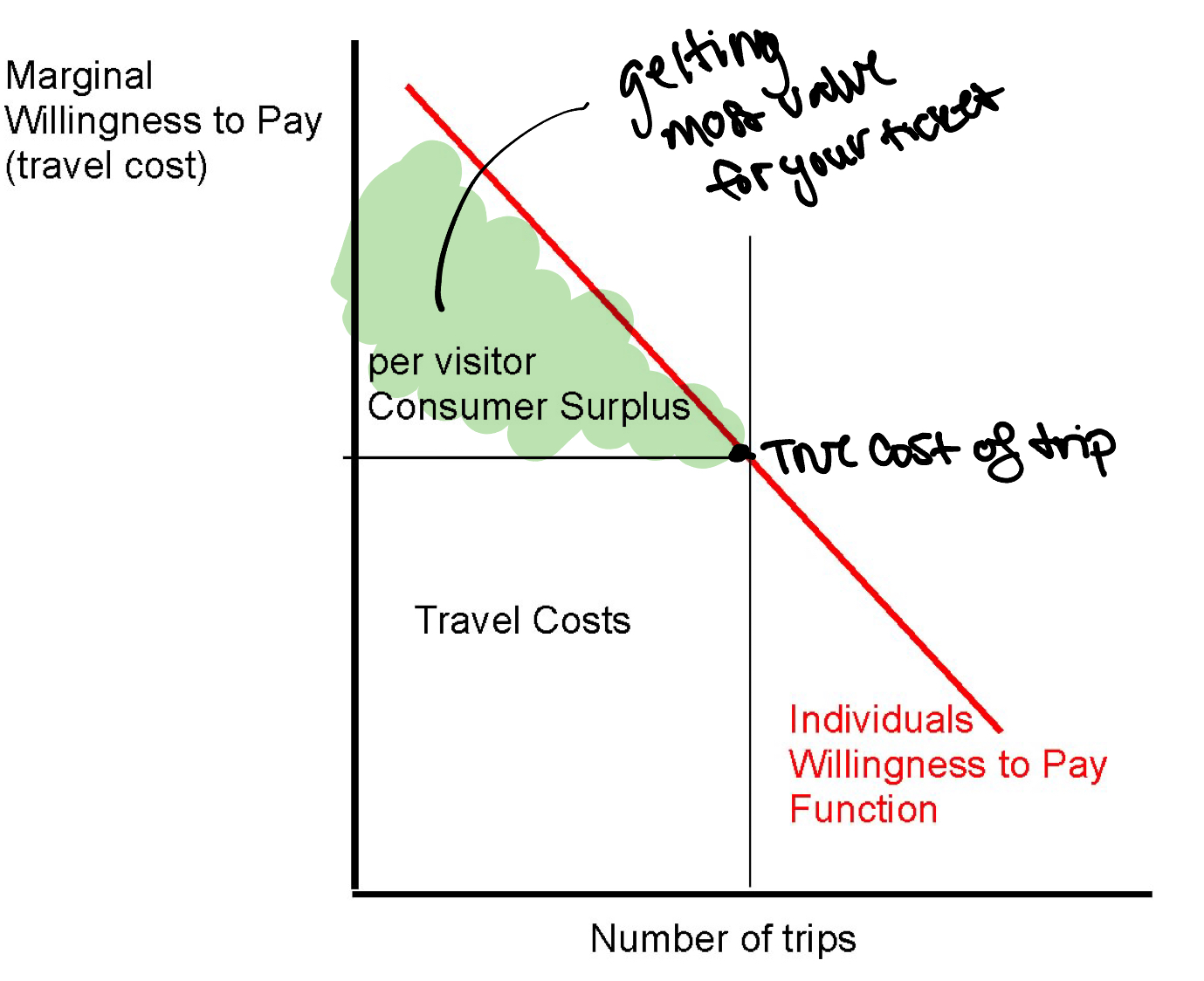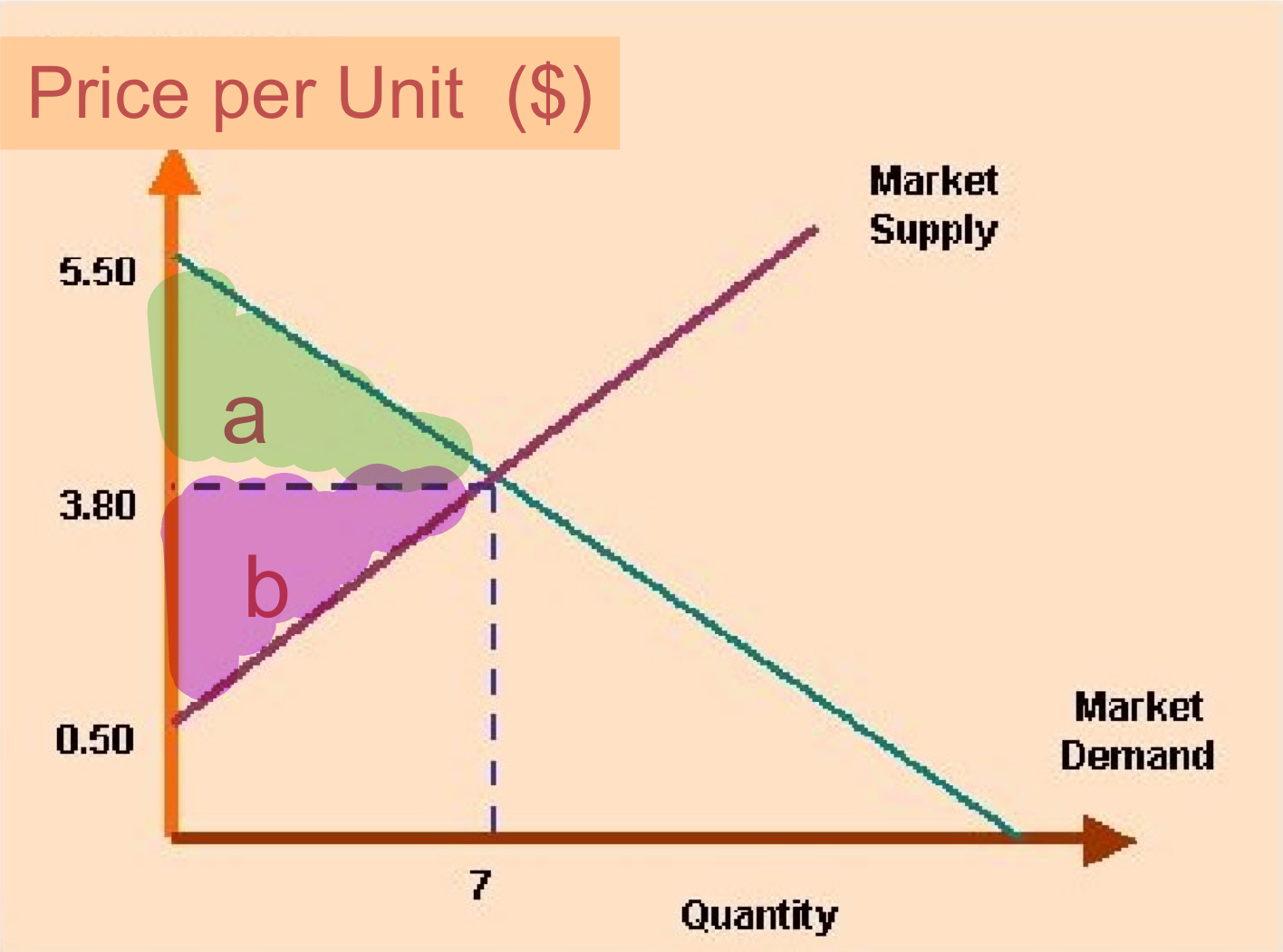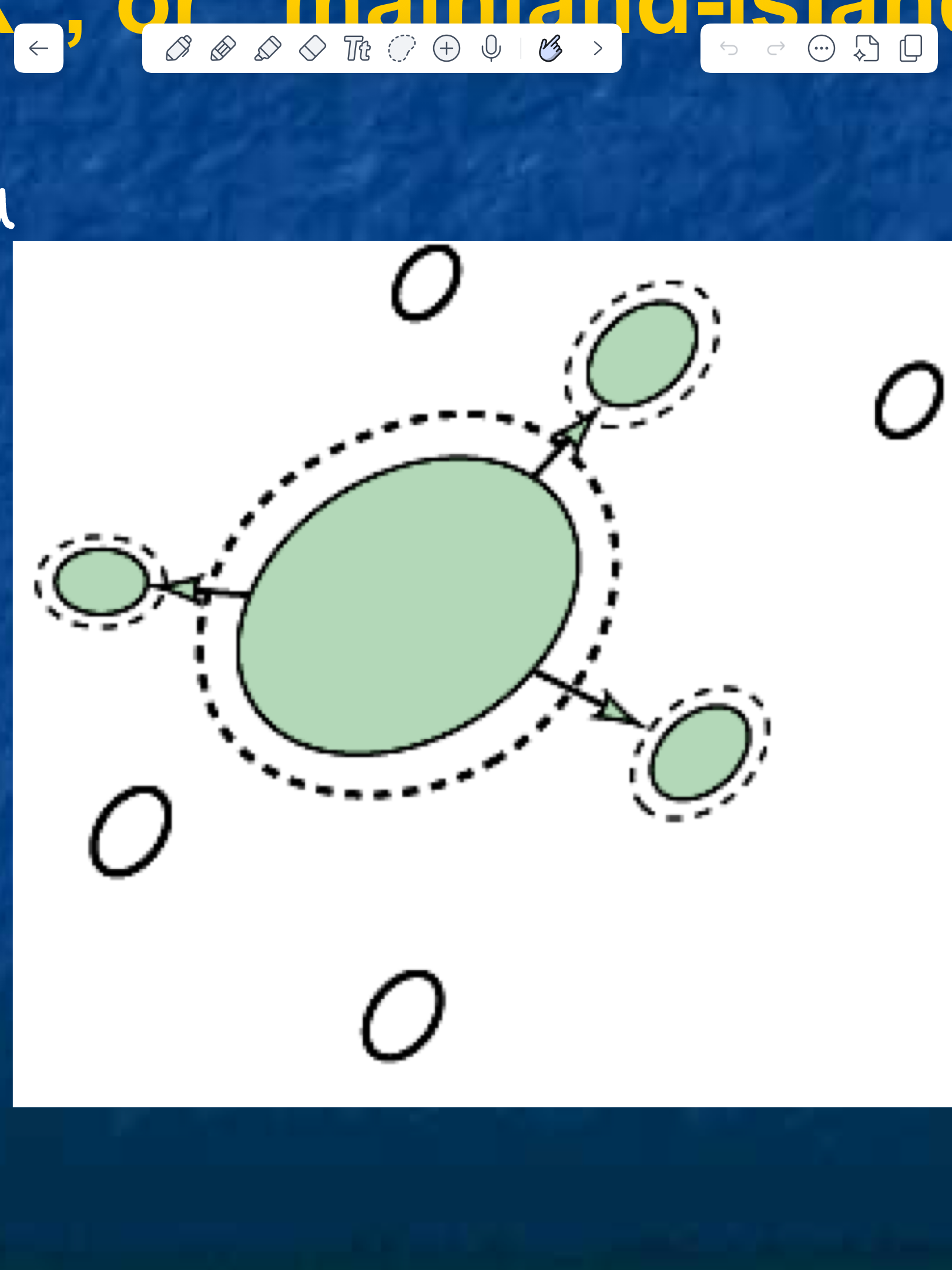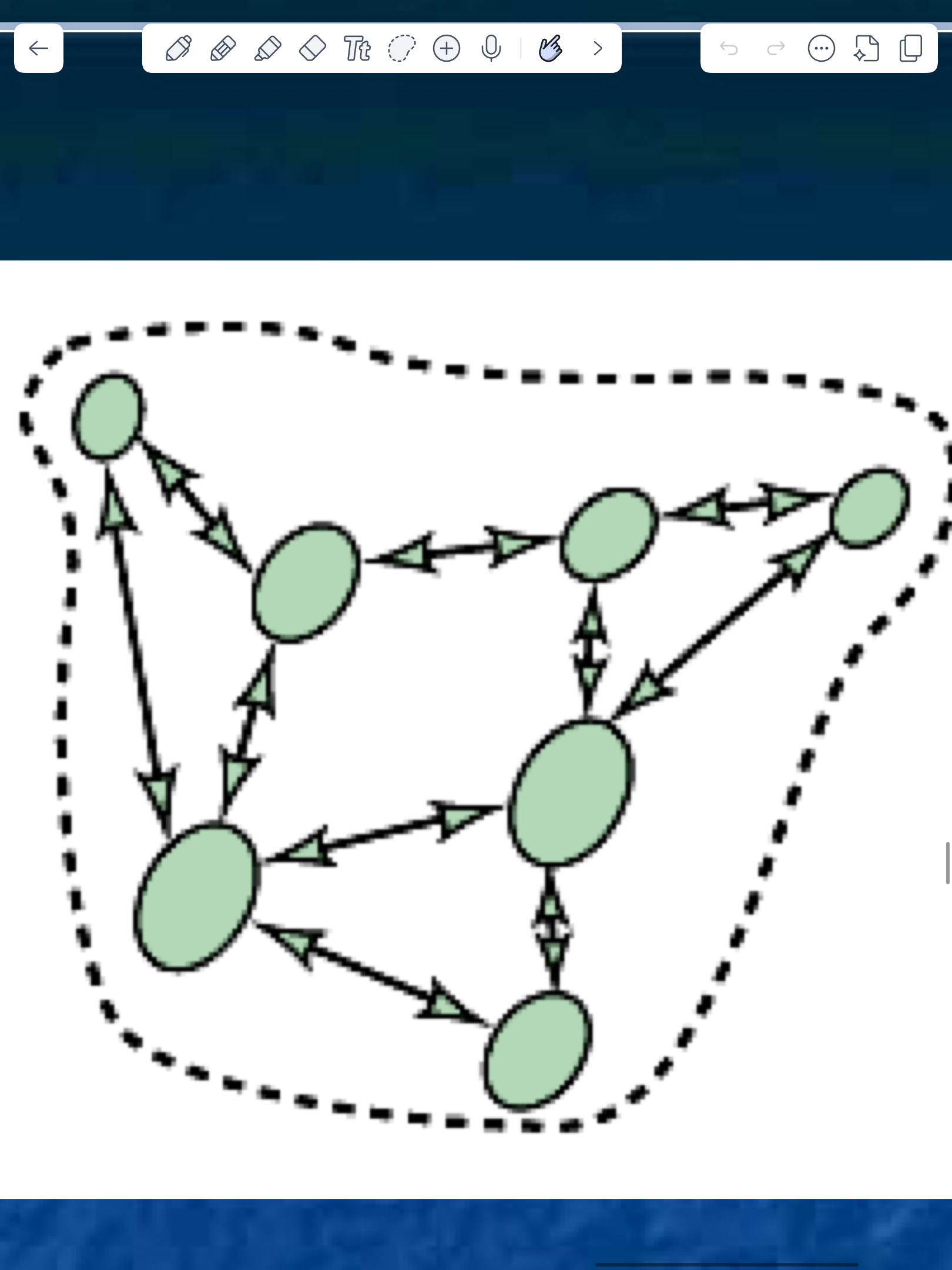Conservation Biology
1/94
Earn XP
Description and Tags
Midterm Exam
Name | Mastery | Learn | Test | Matching | Spaced |
|---|
No study sessions yet.
95 Terms
How people calculate environmental value
market outputs, willingness to pay surveys, travel cost estimates
Marignal Cost
the cost of producing one additional unit of a good or service (total cost still always increasing)
Marignal utility
the additional satisfaction gained from consuming one more unit of a good or service (decreasing like donut example)
Why is marginal cost a u-shaped curve
high upfront costs to get started, then each item cheaper to produce (economies of scale), then rise when shortage or raw material
externality
a positive or negative consequence of an economic activity experienced by unrelated third part
Define MSC MPC MEC and their relationship
MSC (marg social cost)=MPC (marg private cost)+MEC (marg externality cost)
How does net present value relate to discount rate? In terms of environment do we want a high or low discount rate?
Net present value with decrease with higher discount rates. In regards to taking environmental action, we want a low discount rate to preserve future value.
Many conservation-oriented projects have high initial cost and perpetual benefit. Are these favored by high or low discount rates?
Benefits spread over a large # years so benefits are down-weighted through a high discount rate.
What are 6 basic ways to estimate value
Avoided cost
Replacement cost
Factor income
Travel cost
Hedonic Pricing
Contingent valuation
Factor income
services provide for enhancement of incomes (better water = better fisheries and fishery jobs)
Hedonic pricing
Buying based on location (ex beach) vs value of actual commodity (house)
Contingent valuation
Surveying willingness to pay (posing hypothetical scenarios)
Willingness to pay char

Describe
Highest willingness to pay is for something you never have experienced, this decreases as you have it more. Anything below true cost of trip is a loss of value for what you pay.
Alternative measures that account for health, natural resources, and wage disparity
ISEW (Index of Sustainable Economic Welfare)
Genuine Progress Indicator (26 factors)
Better Life Index

a=?
b=?
a=consumer surplus
b=producer surplus
Why were cane toads introduced to Australia?
cane beetles damaging sugar crops
Why wasn’t it successful?
beetles and toads active at different title and grubs underground, harmed other beetle predators, adult beetles high off ground
What attributes made Cane toads invasive?
high and fast repro, toxin, lack of predation, adaptability, will eat anything that fits in their mouth
Have the toad stakeholders changed in terms of cane toad introduction vs elimination?
ag interest —> ecological damage mitigation
How are cane toads evolving?
Why does this matter?
Evolving due to their spatial selection, which has lead toward a trend of longer-legged toads that can disperse to new areas faster (dispersal favoring traits). Increasing rate of frontal progress (previous estimates underestimate them).
Indicates that conservation biologists and managers need to consider the possibility of rapid adaptive change in invading organisms. If there is no fitness disadvantage to individual organisms at the invasion front, evolutionary forces are likely to fine-tune organismal traits in ways that facilitate more rapid expansion of the invading population10. Hence, control efforts against feral organisms should launch ASAP
Utilitarianism
The greatest amount of good for the greatest number of people for the longest amount of time
Romantic Transcendentalism
Nature as a higher moral and spiritual purpose (Muir, Thoreaux, Rooshevelt)
Who was Gifford Pinchot?
Studied under Muir but also saw nature for utility (forestry and lumber) - Utilitarianism
What was the significance of damming the Hetch Valley
Pinchot saw dam implemented as a source of power, which went along with his “wise-use” agenda. Prompted first grassroots activism project to protect natural parks (“never again mentality”)
Explain the evolutionary-ecological ethic and who prompted it
Aldo Leopold - originated concept of biodiversity and conservation of system not species (foundation of modern conservation biology)
What was the significance of Rachel Carlson’s “Silent Spring”
In 1962 it awakened public to chemical pollutants and bioaccumulation
5 step issue attention cycle
Pre-problem
Alarmed discovery (optimistic)
Realization of costs
Gradual decline in public interest
post-problem (still there though)
5 step policy cycle
Policy formation
Policy legitimization
Policy implementation
Policy evaluation
Policy termination or change
what are the issues with small population sizes
inbreeding depression
allee effects
random effects
founder effects
allee effects
positive correlation between population density and fitness (vice versa)
fisher’s fundamental theorum of genetic diversity
the rate of increase in fitness of an organism is equal to genetic variance in fitness at that time
genetically effectively population size (Ne)
number of individuals that would result in the same level of inbreeding/decrease in genetic diversity as if population were ideal
factors that make Ne lower than N
spatial partitioning of population
fluctuating poulation size
breeding sex ratio
Explain the extinction vortex
Factors that increase likelyhood of extinction often come in a one-two punch as they are associated with one another and encourage eachother (ex: demographics and genetics)
Genetic tools for conservation
pedigree analysis
estimation of relatedness
analysis of parentage and mating systems
forensics
species or population identification
estimation of population size
statutory vs common law - which is environmental law mostly
statutory = mandates handed down by authorities
common = precedents set through legal proceedings
environmental law mostly statutory as can’t win in court against rich industry
National Environmental Policy Act (NEPA)
established EPA and procedures for environmental review (1969)
Clean Water Act
inland waters to be swimmable and fishable (1972)
endangered species act
1973
Resource conservation and recovery act (RCRA)
cradle to grave for chemicals (birth defects caused) 1976
CERCLA
polluter pays + superfund cites (1980) - peak environmental movement
Clean air act
S02 permit trading introduced (1990)
NEPA
sets national environmental policy for the first time - sets basis for EIS 1969
what is the only habitat with legal protection
watersheds (through section 404 “navigable waters issue” - along with surface waters - are protected by the clean water act) gutted 2022
What must a habitat recovery plan contain
what is needed to return sp to healthy state
criteria for definition of healthy state (know when to consider “recovered”)
Estimates of cost and timeline
3 organizations that oversee species recovery plans (put in place by EPA)
FWS, NMFS, NOAA
What is an incidental take permit?
land owners can receive if they also submit HCP - habitat conservation plan for the species they want to remove from property
Migratory Bird Treaty Act
1918 - people have to allow some birds to migrate to preserve birds to hunt in future
What are the sources of acid rain
tailpipe emissions, coal combustion, fossil fuels —> all lead to formation of HNO3 and H2SO4
3 gov mechanisms for pollution control
direct regulation
emissions tax
cap and trade
what buffers the effects of acid deposition
soils with basic pH
equilibrium theory of island biogeography
species richness balanced by immigration and extinction rates, both of which are effected by land size and distance from the mainland
what did ETIB fail to cover?
population size was only expressed by presence or absence of a species (effected by predator prey oscillations)
Describe Huffaker’s Predator-prey experiment
use oranges an rubber balls with predator and prey mites to determine that there was more stability (less oscillation) when habitat was more hetergeneous (lessens all at once interaction and gives prey time to repopulate)
what are the three main reasons for allee effects
difficulty finding mate/resources
difficulty avoiding predation
inbreeding depression
make distinction between one population, separate populations, subpopulations, and metapopulation
one population: complete genetic mixing, gene flow value = 1
separate populations: non gene flow between organisms of two places even though same species
subpopulations: constrained mixing, gene flow value between 0-1
metapopulation: subpopulations interlinked through dispersal mutually affecting eachother
Describe subpopulations
distinct breeding groups (separate spatially) but some gene flow between
how are metapopulations maintained
balance between colonization and extirpation (colonization greater), suitable habitat (heterogenous) patchily distributed
extirpation
local - regional loss
are all potential habitat patches occupied
NO (temporarily vacant habitat is important to long-term sp survival)
Describe the terms in Levins Metapopulation Model: dp/dt=mp(1-p)-ep
dp/dt = change in patch occupancy
mp(1-p) = colonization rate
-ep = extirpation rate
why is levins model unrealistic
assumes
instantaneous patch occupancy
equal area and isolation patches
patches all operate independently
moderate movement
what factors effect balance between local extirpation and recolonization
local birth and death
dispersal flow between habitat patches
how do spatially explicit models fix levins idea
factor in distance and patch size
identify the 5 spatially explicit metapoulation models
classic levins
mainland-island
patchy population
non-equilibrium
intermediate case

name and describe this population model
non equilibrium:
limited dispersal
overall extirpations and species decline
typical of rare species

name and describe this population model
mainland-island (also “source-sink” or “core-satellite”):
extirpation resistant core
colonists disperse to small periphery patches (higher prob of extirpation)
source most important for conservation

name and describe this population model
patchy:
high dispersal
all fluctuation simultaneous (single exterpation resistant entity)
colonists “rescue” other patches constantly
what can relative fitness values among sub populations tell us
they can indicate sources (fitness over 1) and sinks (really low and decimal values)
How did Terry Erwin estimate spp richness? What were the results?
fogging different trees to catch insects in net and count species. extrapolated findings to all tree species —> estimated 30 million insect species
What were hodkinson and Casson’s findings on species richness
study hempiteran bugs on variety of host plants for a year —> projected yet another estimate of number of species
Describe how total number of species can be predicted by knowledge of diversity across taxonomic levels
number of taxa in each group (ex phylum class order) evens out at a certain level after discoveries are made, so based on what we know about one taxonomic level, we extrapolate to total number of species
Why is species richness a commonly used metric for biodiversity
easy to measure (count number of species)
easily understood
how are taxonomic estimates used to preserve biodiversity
you can see which groups of species have similar genes and can focus conservation efforts on those more distinct from the whole (want to pick broad sets of genotypes)
What provides a linear correlation (and therefore is a great predicter of) species diversity
Family diversity (low cost method) has a linear relationship
how does latitude predict biodiversity and why?
latitudes further from equator (increasing) are less rich in species
temperature
day-length
growing season
productivity
Mountain gradients have similar effect due to the adiabatic laspe rate of cool air
what is unique about the way diversity on a mountain changes with latitude
“mid-elevational bulge”
why is elevation also a strong predicter of biodiversity
Temperature
UV
Wind
Cloudiness
Steep Slopes
Thin Soils
Productivity
in a simplified answer “what habitats have highest diversity”
mid elevations of wet tropical mountains
what is beta diversity
number of new species encountered entering a new habitat (basically like rate of species turnover)
what conditions produce high beta diversity
narrow species ranges
what produces low beta diversity
broad and overlapping species ranges (almost all species found everywhere)
how can beta diversity be measured
use a dissimilarity index (inverse equation)
relaxation
Decline habitat area means loss of species (sp with low pop density are especially at risk)
supersaturation
artificially high population density after loss of habitat and remaining area gets overcrowded (can also occur from artificial feeding)
Describe the concept of extinction debt
after habitat loss there is a delay until when consequences (relaxation and supersaturation) happen, if the system returns to equilibrium, there will be
reduction in population size for supersaturated sp
the extinction of spp without viable habitat
half-life
when half of the extinction debt has happened
extinction is slower to be paid in (blank) fragments
larger
why is mesopredator release a symptom of extinction debt playing out
mesopredators flourish when top predators are removed
List common edge effects
reserve shape
moisture gradient - convection caused by temperature difference leads to dry edges
pet predation
invasives
characteristics of species most vulnerable to fragmentation
rare and endemic
require large habitats
poor dispersers
populations that fluctuate
ground nesting birds!!
game animals
what percentage of exotics are invasive
0.1
characteristics of successful invaders
adaptive
high density
good at dispersing
high reproductive (intrinsic) growth rate
human tolerant
characteristics of invasible ecosystems
disturbance and low spp diversity
how does enemy release relate to the success of invaders
invaders lack specialist enemies (no one eating only them) so they feel less predation pressure